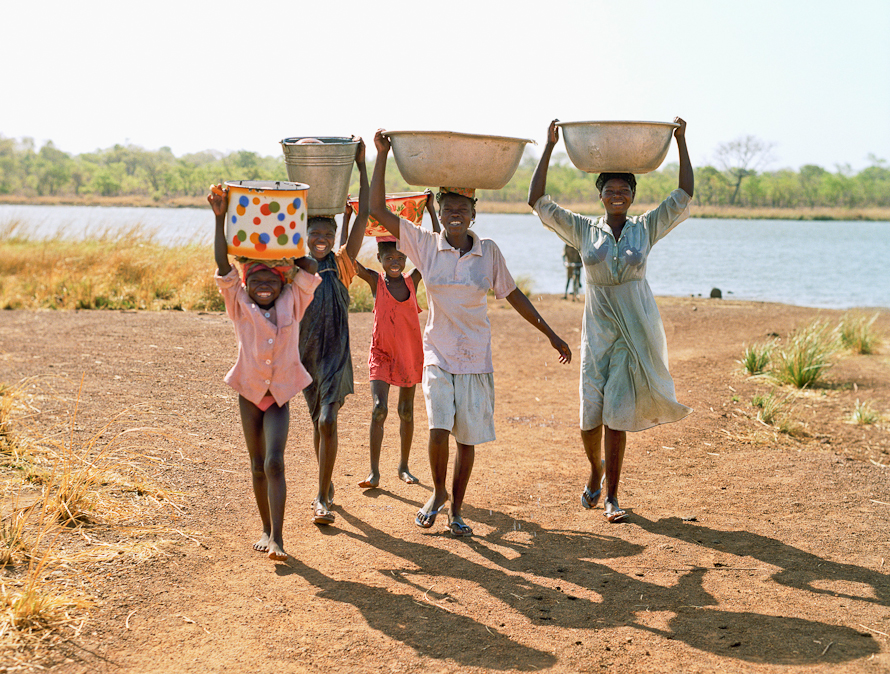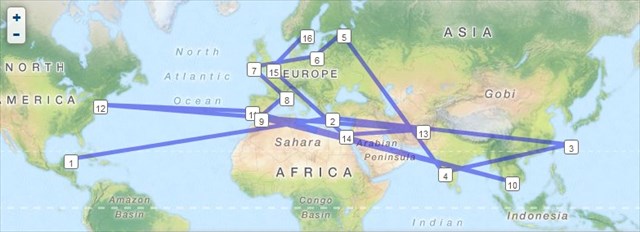
Below the Equator again, and our first stop in sub Saharan Africa.
Join the Central Jersey Cachers for Goat Meat Soup, Fish in Palm Oil Sauce, Jolloff Rice, and other Ghanaian cuisine. Asanka Delight is the excursion here. BYOB is the liquid fare.
No need for sunscreen, as this event kicks off at 6:30pm.
920 Hamilton St, Somerset, NJ


Ghanaians enjoy a rather simple, but flavorful cuisine. The majority of meals consist of thick, well-seasoned stews, usually accompanied by such staple foods as rice or boiled yams. Stews come in a variety of flavors, the most popular being okra, fish, bean leaf (or other greens), forowe (a fishy tomato stew), plava sauce (spinach stew with either fish or chicken), and groundnut (peanut), one of the country's national dishes. Many spices are used to prepare stews and other popular dishes. Cayenne, allspice, curry, ginger, garlic, onions, and chili peppers are the most widely used seasonings. Onions and chili peppers (along with tomatoes, palm nuts, and broth) help to make up the basis for most stews. Certain foods that make up the Ghanaian diet vary according to which region of the country people live in. In the north, millet (a type of grain), yams, and corn are eaten most frequently, while the south and west enjoy plantains (similar to bananas), cassava, and cocoyams (a root vegetable). The people of the dry southeastern region eat mostly corn and cassava. Rice is a staple throughout most of the country. Jol lof rice , a spicy dish that includes tomato sauce and meat, is enjoyed by most of the population. Pito , a fermented beverage made from sorghum (a type of grain), is a popular drink in the north, while those living in the south prefer palm wine.
Let's learn a little more about the country and history of this Africa country, shall we?
Ghana's earliest inhabitants existed as long ago as 6000 B.C. Ancient stone tools and other artifacts have been discovered that suggest early hunter-gatherer communities, most of which lived by the ocean. These nomadic tribes (traveling from one place to another) roamed the land in search of berries and wild seeds, and followed herds of animals for meat.

Ancient trade routes existed long before the arrival of the first Europeans in 1471. Trade routes running north to south, and east to west, many of which ran through Ghana, existed throughout the continent of Africa. Modern-day Ghana imported dates, salt (for food preservation), tobacco, and copper from northern territories, while Ghana offered ostrich feathers, cloth, and cola nuts in return. The Portuguese arrived in modern-day Ghana in 1471, the first Europeans to explore the land. Though they were searching for a sea route to the Far East, the explorers began building forts along the coast and trading with inland tribes for their gold. By 1600, the Dutch and English began exploring Ghana. One hundred years later, the Germans and Danes also built forts—all hoping for ivory and gold. In return, explorers brought rum, cotton, cloth, beads, and weapons to the tribesmen. Eventually the Europeans forcefully captured Ghanaians as slaves. In addition to ivory and gold, Ghana was exporting palm oil, pepper, and corn by the mid-1800s. By 1902, the British had driven out all other European powers and named their new British colony the Gold Coast (it was later named Ghana in 1957). To continue the economic development of Ghana, the government distributed cocoa beans to local farmers to encourage the growth of a cocoa industry. At the beginning of the twenty-first century, Ghana's economy continued to be largely reliant on the exports of gold and cocoa. Bananas, cola nuts (the basic ingredient of many cola drinks), coconuts, rice, palm fruit, and various citrus fruits have also flourished into profitable cash crops.

Where have we been so far? Track the World Traveler Geocoin (TBVF0M) and see this map.
Where will this crazy ship pull into port next? Only the pink flamingo knows.......

1 - Mexico - July 16, 2012
2 - Greece - August 23, 2012
3 - Japan - September 12, 2012
4 - India - October 11, 2012
5 - Russia - November 14, 2012
6 - Poland - December 5, 2012
7 - Ireland - January 22, 2013
8 - France - February 26, 2013
9 - Spain - March 13, 2013
10 - Thailand – April 30, 2013
11 - Portugal - May 28, 2013
12 - United States of America - June 4, 2013
13 - Afghanistan - July 11, 2013
14 - Egypt - August 6, 2013
15 - United Kingdom - September 18, 2013
16 - Sweden - October 16, 2013
17- Peru - November 6, 2013
18-Germany - December, 20 2013
19-Ghana - January, 7, 2014